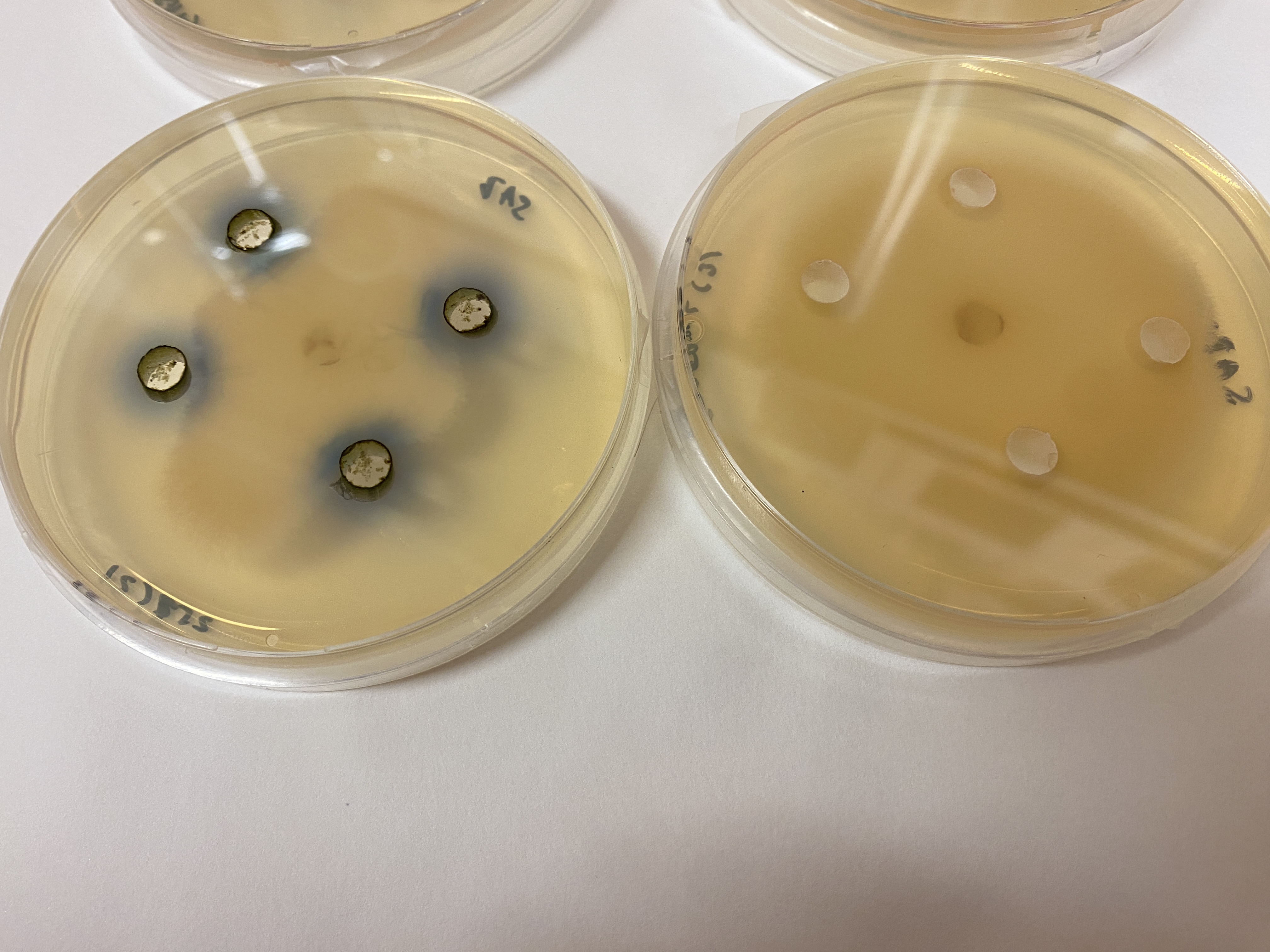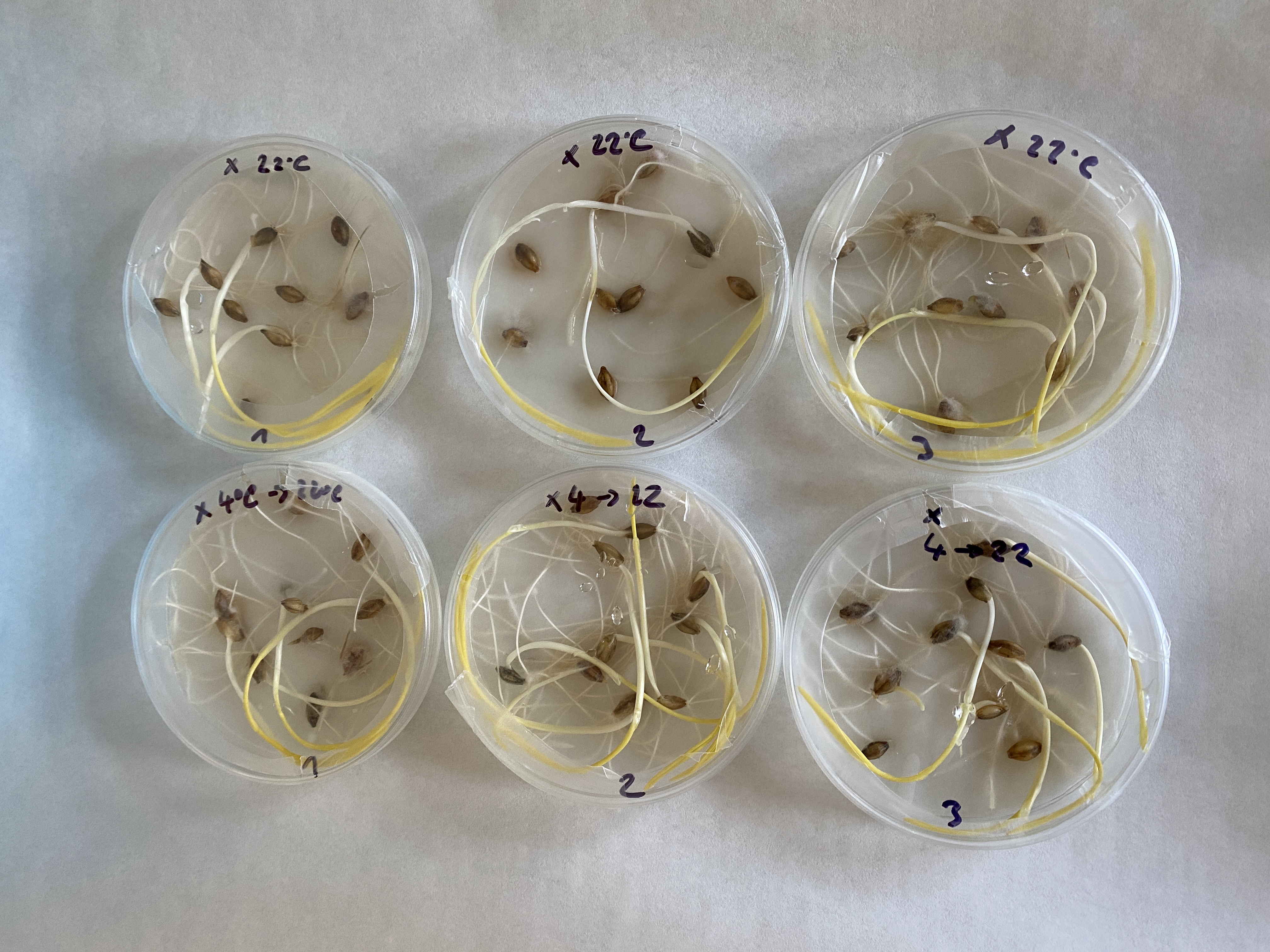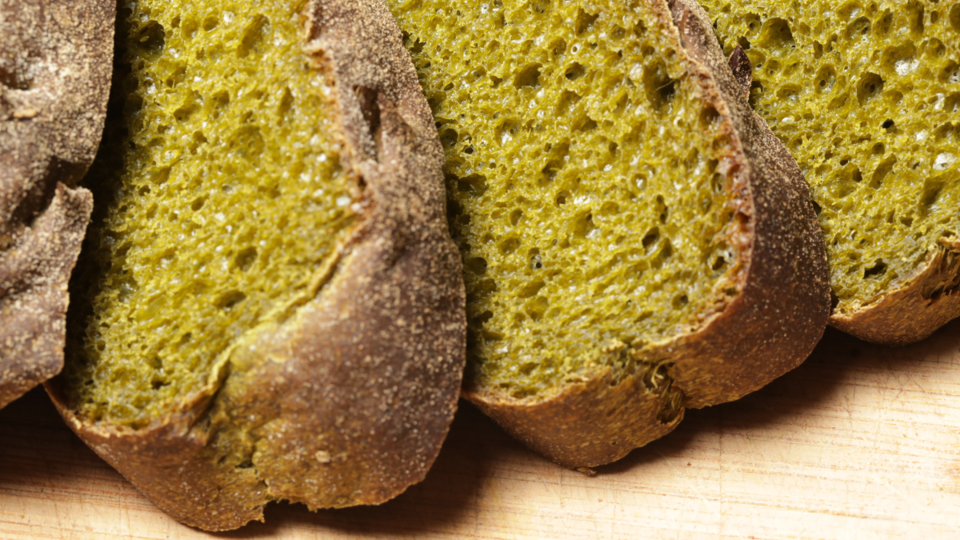Laboratory of algal biotechnology
Jiří Masojídek's group
Photoautotrophic cultivation
Selection and characterization of microalgae strains
The aim of this activity is to select suitable microalgae strains for photoautotrophic cultivation in terms of biomass production with increased content of valuable substances (carotenoids, lipids and polysaccharides, biostimulants, biopesticides). We also focus on the physiological and photochemical characterization of strains at laboratory and pilot scale.Selection and characterization of microalgae strains
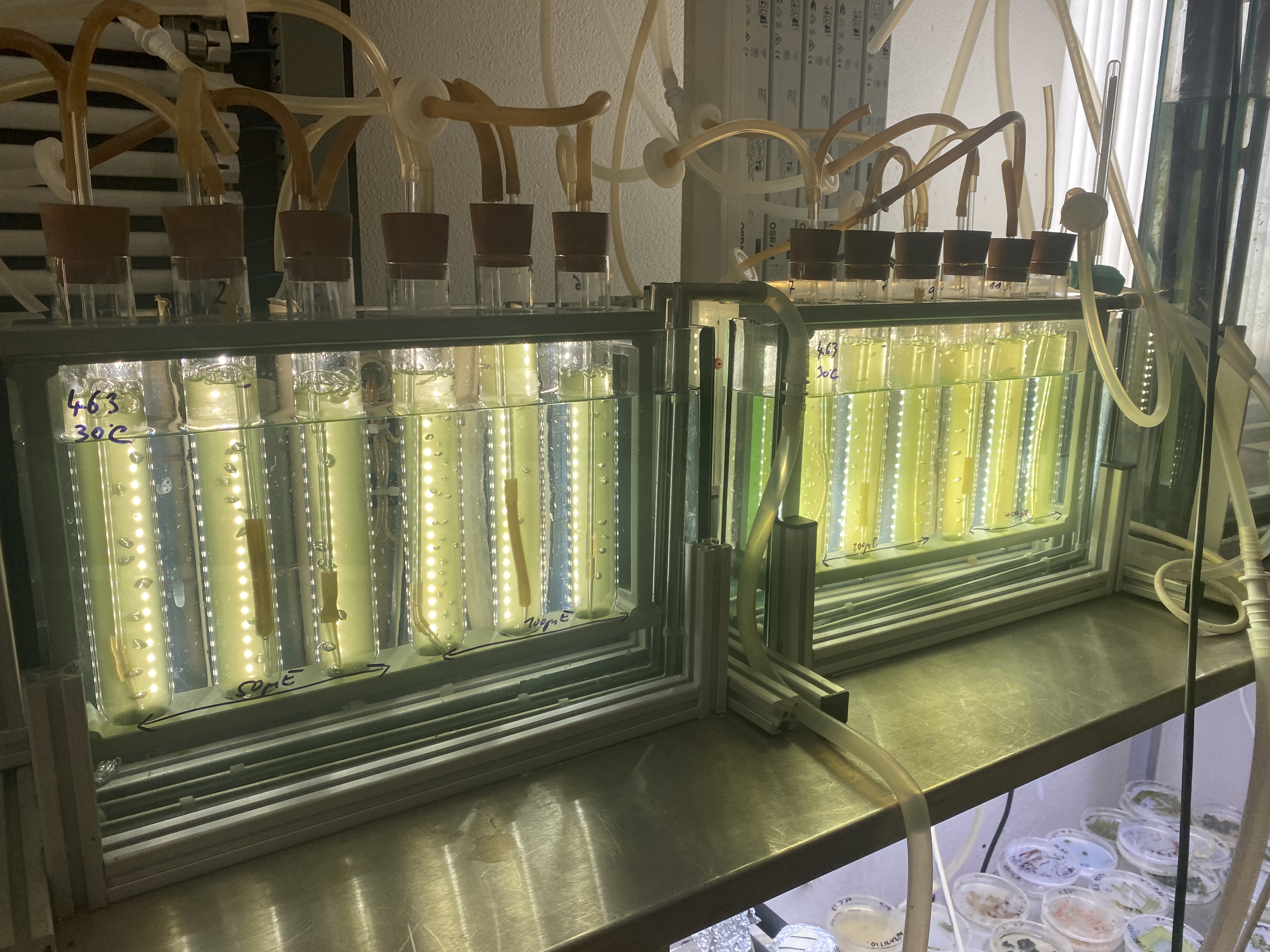
Design and construction of cultivation systems
Design of laboratory and outdoor culture systems suitable for the cultivation of freshwater microalgae. A 90 m2 outdoor stainless steel thin-layer cascade (TLC) was constructed as a fully operational DEMO facility. We also have a pilot TLC and raceway pond (RWP) cultivation system with 5 m2 located in greenhouses. For laboratory work we use a range of photobioreactors in volumes from litres to hundreds of litres.



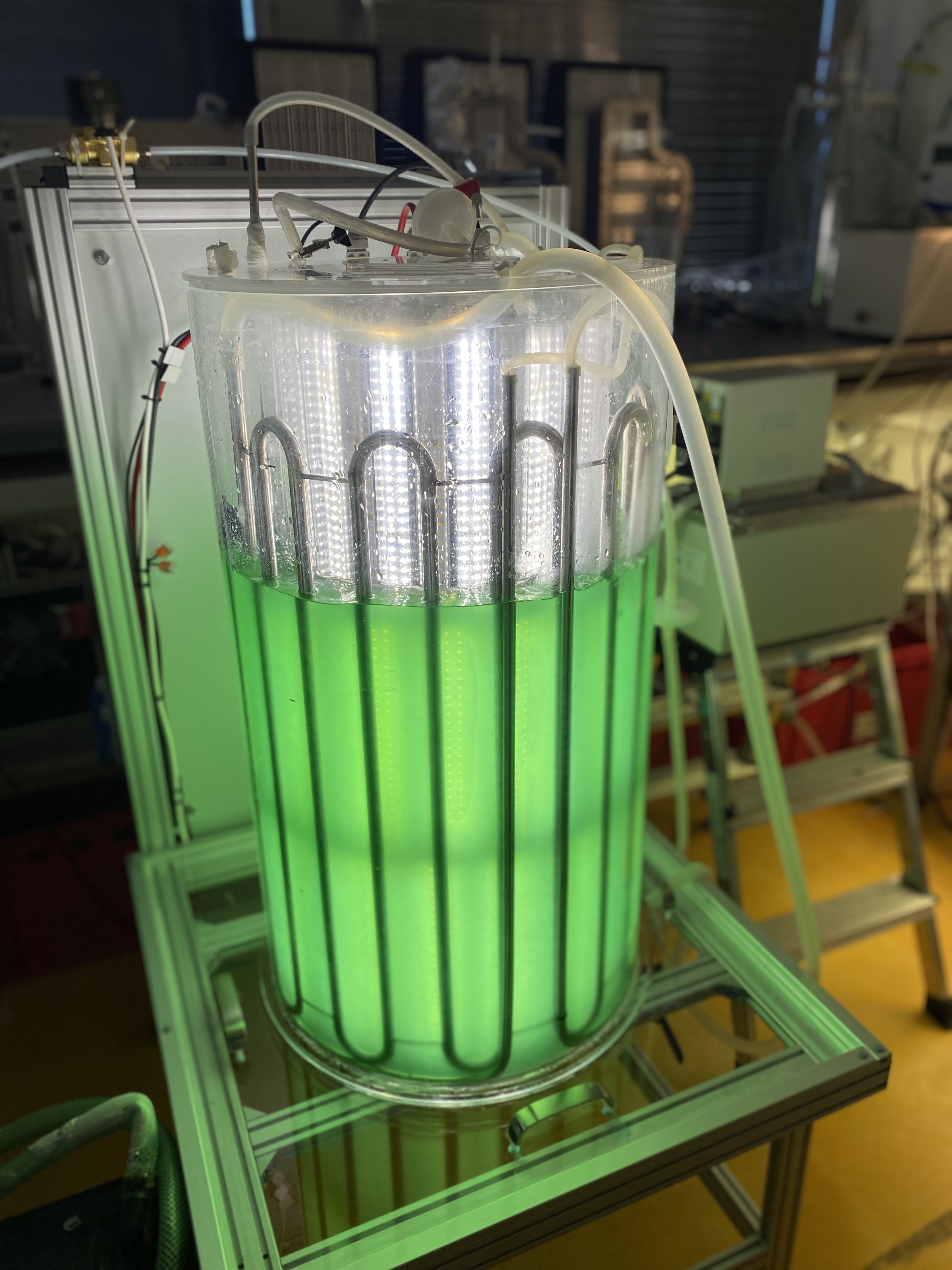
Determination the bioactivity of microalgal biomass
Microalgae strains produce a spectrum of biologically active compounds such as plant hormones (responsible for biostimulant activity) and antimicrobial compounds (promoting biopesticide activity). Biomass and its extracts can therefore be used as an alternative to replace chemical pesticides and artificial fertilisers, the residues of which can cause environmental pollution. Since the cultivation of microalgae requires certain amounts of nutrients such as nitrogen, phosphorus and carbon, municipal wastewater contains high amounts of nitrogen (mainly in the form of ammonia), phosphorus and carbon (in the form of organic matter) can replace the expensive mineral fertilisers used for microalgae cultivation We are also focusing on the investigation of microalgae with a specific fatty acid profile, as some polyunsaturated fatty acids (PUFA) produced by microalgae may have biotechnological applications in food and feed production.
